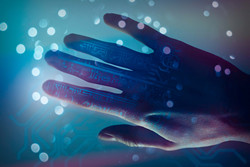Trending Science: Prosthesis with a sense of touch
Prosthetics are on a roll lately. At the end of last year, CORDIS reported how NEBIAS, an EU-funded project, had developed the world’s most advanced bionic hand – capable of detecting information about touch and sending it real time to the patient thanks to a neuro-interface. Now, on the other side of the Atlantic, DARPA presented a prosthetic hand relaying different sensations of pressure through neural pathways in the spinal cord. The scientists behind the new device speak of a ‘near-natural’ sense of touch. ‘We’ve completed the circuit,’ DARPA program manager Justin Sanchez said. ‘Prosthetic limbs that can be controlled by thoughts are showing great promise, but without feedback from signals traveling back to the brain it can be difficult to achieve the level of control needed to perform precise movements. By wiring a sense of touch from a mechanical hand directly into the brain, this work shows the potential for seamless bio-technological restoration of near-natural function.’ The prosthetic hand was tested on a 28-year-old man who had been paralysed for over a decade following a spinal cord injury, to see if it was possible to help him feel physical sensations again. Scientists at the Applied Physics Laboratory (APL), Johns Hopkins University first wired the prosthesis to his brain and blindfolded him. Then they pressed different fingers of the artificial hand to find out if the volunteer could feel anything. DARPA reports that while wearing the prosthetic hand the patient was able not only to ‘feel’ when the hand was being touched, but also to tell precisely which finger was touched. ‘At one point, instead of pressing one finger, the team decided to press two of them without telling him. He responded in jest asking whether somebody was trying to play a trick on him. That is when we knew that the feelings he was perceiving through the robotic hand were near-natural,’ said Sanchez. The prosthesis control system consists of two chips embedded in the patient’s brain, connected to pressure-sensitive torque sensors placed in the artificial hand. The 1mm wide chips contain several electrodes and are placed in both the motor cortex, which controls arm and hand movements, and the sensory cortex which receives and identifies signals resulting from tactile sensations. Every time the prosthetic hand touches something, the sensors send electrical signals via wires to the chips in the brain – making the wearer feel near-natural contact. The new technology was presented at the Wait, What? A Future Technology Forum on September 10. Sanchez and his team are still awaiting peer review and publication in a scientific journal. For more information, please see the official DARPA statement.
Countries
United States

